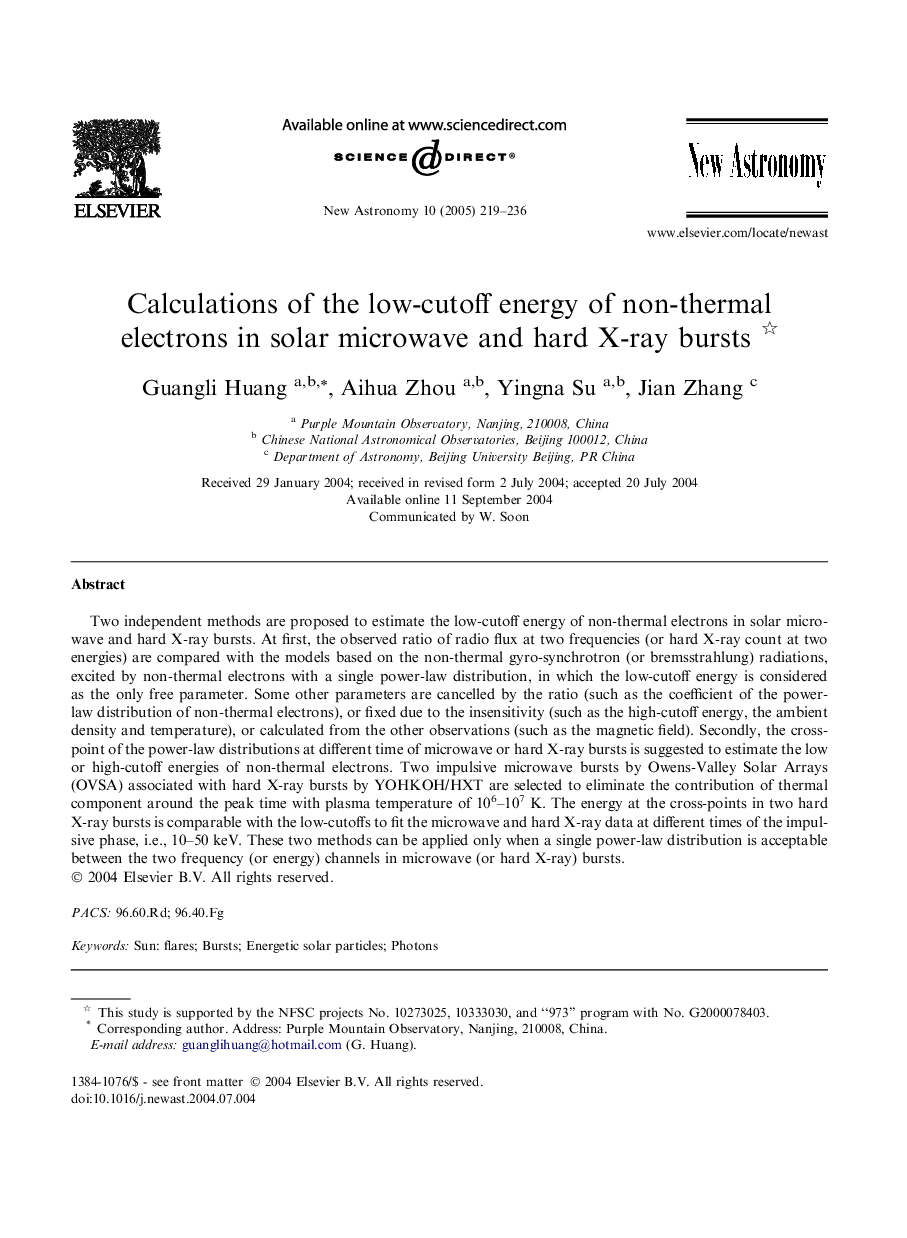| Article ID | Journal | Published Year | Pages | File Type |
|---|---|---|---|---|
| 10704653 | New Astronomy | 2005 | 18 Pages |
Abstract
Two independent methods are proposed to estimate the low-cutoff energy of non-thermal electrons in solar microwave and hard X-ray bursts. At first, the observed ratio of radio flux at two frequencies (or hard X-ray count at two energies) are compared with the models based on the non-thermal gyro-synchrotron (or bremsstrahlung) radiations, excited by non-thermal electrons with a single power-law distribution, in which the low-cutoff energy is considered as the only free parameter. Some other parameters are cancelled by the ratio (such as the coefficient of the power-law distribution of non-thermal electrons), or fixed due to the insensitivity (such as the high-cutoff energy, the ambient density and temperature), or calculated from the other observations (such as the magnetic field). Secondly, the cross-point of the power-law distributions at different time of microwave or hard X-ray bursts is suggested to estimate the low or high-cutoff energies of non-thermal electrons. Two impulsive microwave bursts by Owens-Valley Solar Arrays (OVSA) associated with hard X-ray bursts by YOHKOH/HXT are selected to eliminate the contribution of thermal component around the peak time with plasma temperature of 106-107 K. The energy at the cross-points in two hard X-ray bursts is comparable with the low-cutoffs to fit the microwave and hard X-ray data at different times of the impulsive phase, i.e., 10-50 keV. These two methods can be applied only when a single power-law distribution is acceptable between the two frequency (or energy) channels in microwave (or hard X-ray) bursts.
Related Topics
Physical Sciences and Engineering
Physics and Astronomy
Astronomy and Astrophysics
Authors
Guangli Huang, Aihua Zhou, Yingna Su, Jian Zhang,
